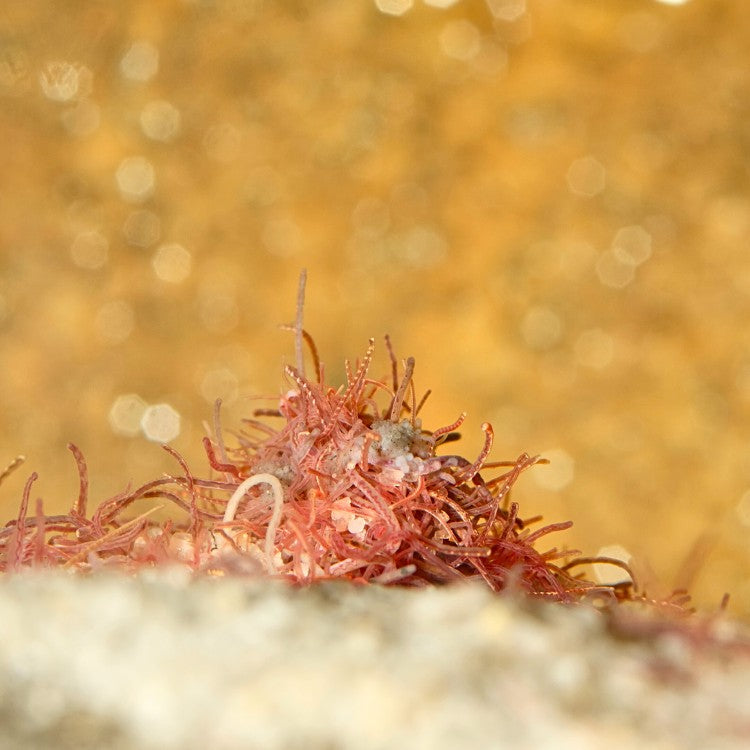
Can fish safely eat Tubifex?
F. MattierShare
Tubifex, which are a significant part of the diet of fish in the wild, are a food of choice for those who want to get closer to natural conditions.
Very similar in composition to the Blackworm, this annelid worm is rich in proteins and hemoglobin (hence its color).
He is much thinner than his lookalike and generally smaller as well.
But, as it is on the fish menu, evolution has logically driven many parasites and pathogens to choose it as a host to reach.
Moreover, this worm is a very active decomposer and pollutant remover, playing a key role in waste recycling in aquatic environments.
When the water is very dirty and heavily polluted, to the point of smelling bad due to a lack of oxygen, it is often the only animal that continues to live there.
The Tubifex can live for several months without oxygen!

"It is an example of remarkable specialization: being a decomposer of organic matter, it is equipped to survive in environments that contain a lot of it, and even too much."
The flip side of the coin is that, in these polluted environments, it accumulates all sorts of dirt in its body!
"This is why it is absolutely unimaginable to harvest it from nature to give to your fish. Parasites, microbial pathogens (streptococci, staphylococci, Mycobacteria, Myxobolus, etc.) and even heavy metals often end up in its body."

"Even by letting it 'drain' for a long time, the risk remains present."
The solution is therefore to raise it in a controlled manner, in a very clean environment, and to only obtain it if it comes from a reputable breeding.
'Just like the mud worms fished from nature (often coming from Poland) should be reserved for fishermen and never for our fish, wild Tubifex should be banned in aquaristics.'

On the other hand, when one wants to raise Tubifex, or even introduce them into a bug aquarium (without fish), one discovers a fascinating animal, with behavior similar to that of the Blackworm, as it also buries itself halfway into the substrate, leaving its tail sticking out and dancing, through which it breathes.
The big difference with the Blackworm, apart from its much smaller size, is that it can reproduce both by dividing (itself) and by laying eggs, which makes it more prolific. It is also capable of encysting itself in dormant forms to withstand total desiccation and then be reborn later!
Thus, sometimes it is enough for a wild duck to land at the edge of a pond without Tubifex for it to magically introduce these worms into the new environment just by dropping a bit of dried mud stuck to its feet from the previous pond.

If you want to raise Tubifex, here are a few simple rules:
- raising it alone (and obviously without fish)
- provide it with a substrate of own funds (simple sand is sufficient)
- introduce a bubbler
- change (very) often the water, because it dirties it a lot
- be patient: like all invertebrates, it needs its microbiota to first establish itself in the environment to start multiplying properly (for example of Grindal which sometimes takes more than a month to be visible outside of its substrate).
- feed it with clean and even disinfected food by boiling it: this way they will only be colonized by the microbes present in the breeding tank and will not introduce anything!
- or give him micronized spirulina in small amounts, which is even simpler.
For the harvest, some use a piece of Perlon (cotton works too) in which worms will settle, and all that remains is to place it in the fish tank.
Because a clean Tubifex is a real pleasure without risk!


1 comment
Super intéressant, j’en élève et je viens de comprendre (et d’apprendre) comment mieux faire, merci beaucoup pour cet article 🙏 . Signé : un passionné de culture de nourriture vivante 😉